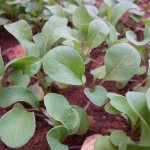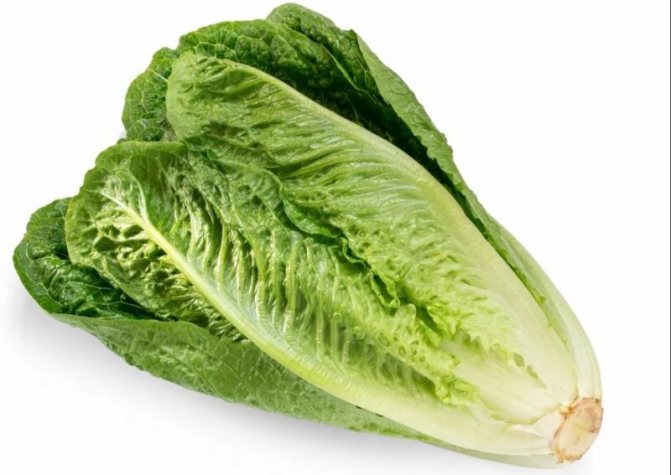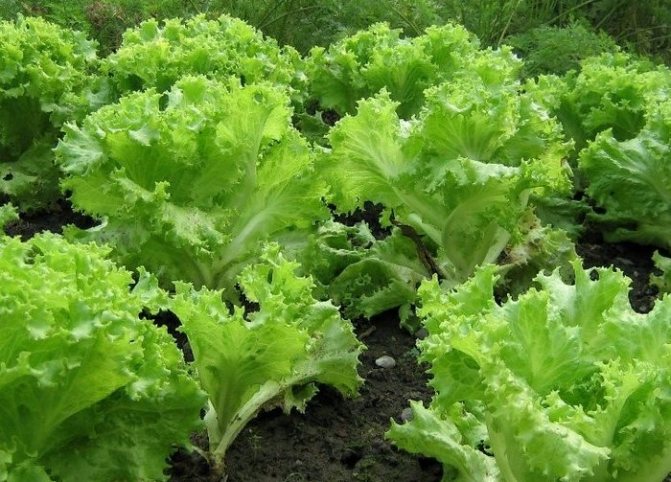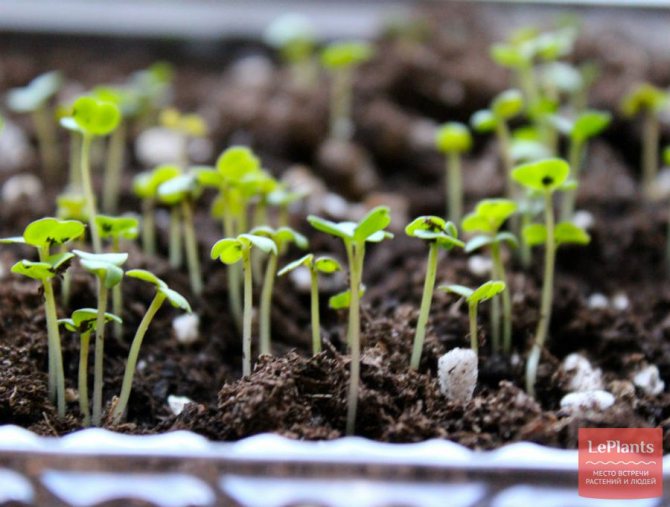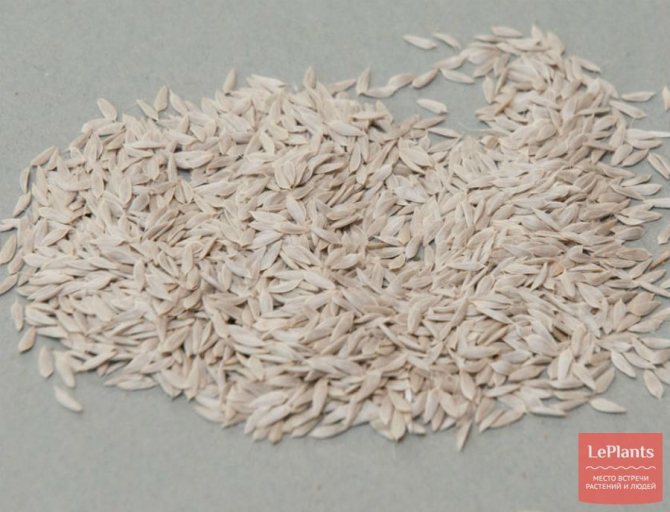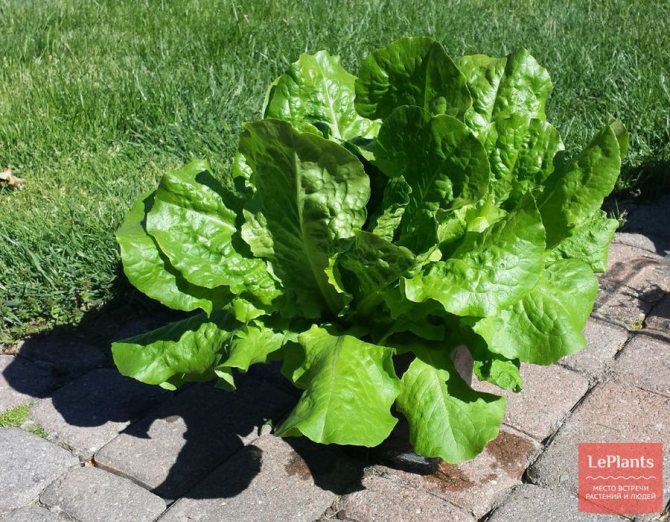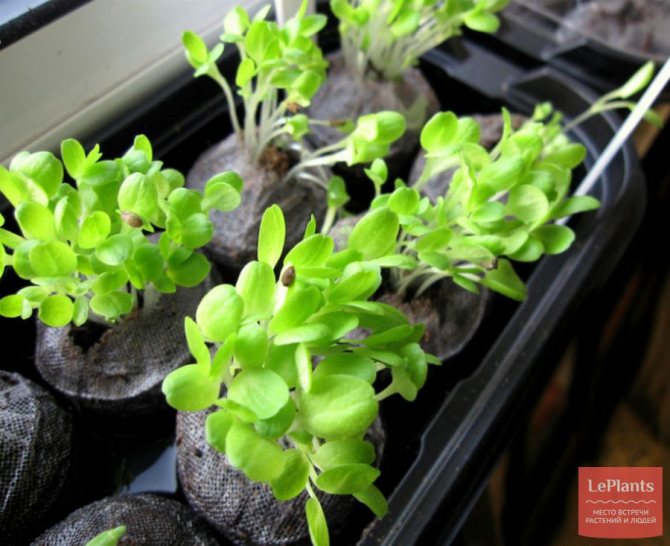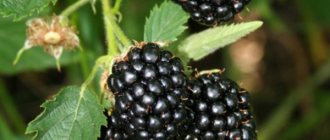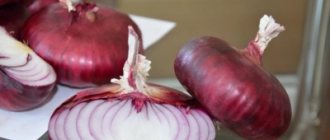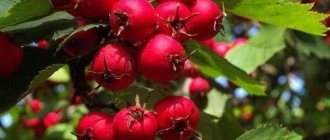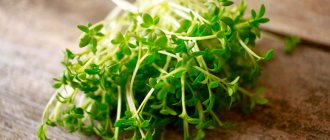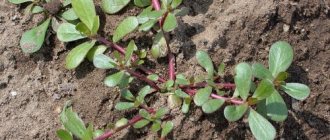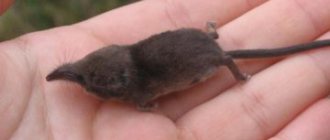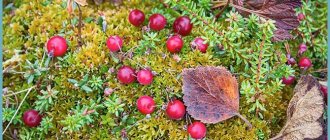Various types and varieties of lettuce are suitable for obtaining early greens. Such plants develop well in any climatic conditions, they are undemanding to the composition of the soil, and can withstand slight negative temperatures. For sowing these crops, areas well lit by the sun are ideal, it is desirable that the soil is well aerated. To get a harvest of greenery in the spring, early maturing crops are used, if it is necessary to harvest throughout the summer, crops of the middle growing season are used. In our article, we will take a look at the varieties and popular good varieties of lettuce.
There are many varieties of such cultures, no less than a thousand. Despite such a huge variety, culinary experts in our country use several dozen species. Next, let's take a look at the name and description of the most popular of them.
Arugula
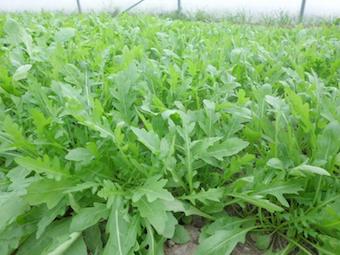
The leaves of the plant have a pungent aftertaste and a nutty aftertaste. Thanks to these features, these greens are used for making salads. It goes well with sour and sweet foods, fatty foods. Arugula leaves are dark green in color, they are combined with delicate greens of lettuce, endive or red radicio.
The taste of greens contrasts with the background of many fruits, ideally combines with strawberries, figs, raspberries and strawberries, fried apricots, figs and tomatoes. Arugula also goes well with sweet, delicate dressings made with raspberry vinegar, olives and soft cheeses.
Leafy classic salad
This type of greenery is considered one of the most popular among domestic gardeners. Summer residents have been growing this plant for many decades. The salad has light green delicate leaves with curly edges. To prepare the dish, it is enough to chop the herbs, add salt and vegetable oil. Such a salad is made just before serving food, otherwise it will darken and lose its attractiveness.
Frize
The type of head lettuce belongs to the chicory family. The leaves are tender with a bittersweet aftertaste, add spice to other dishes, go well with other types of salad, pasta and chicken. Frize is also often served with poached eggs (this product is boiled without the shell).
Also read: Why is watercress useful?
Iceberg
The head-type iceberg lettuce has pale green crispy leaves. The greens have a pleasant mild taste and go well with blue cheese.
Lettuce
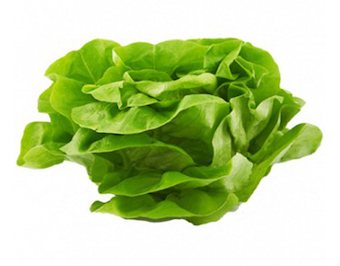

Lettuce salad is very popular among culinary experts due to its noble taste and delicate texture of greens, it goes well with citrus fruits. Lettuce can be combined with watercress, arugula, and red radicchio and has delicate, palatable leaves. Various dressings based on balsamic or white wine vinegar will reveal the delicate taste of this type of salad.
The product is suitable for creating compositions with pears, watermelon and fried peaches. The salad is often sprinkled with pre-fried nuts or chopped goat cheese.
Radicchio
This plant has leaves of a unique white-red color. Radicchio contrasts well against the background of other types of salad with the standard dark green or light green greens.The product is ideally combined with arugula, endive or lettuce. Radicchio will complement the taste of chicken, berries, hard cheese or smoked meats. To remove excess bitterness, greens are soaked for 10-15 minutes in cold water.
Spinach
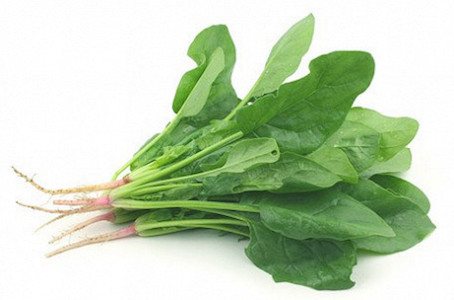

This type of lettuce has delicate dark green leaves. The product harmonizes well with bell peppers or onions, complements the taste of anchovies, olives, tomatoes, citrus fruits and pears. In addition, a spinach-based salad is combined with fried bacon, fetta, parmesan and eggs. Wine vinegar and mustard can be used as a dressing for the product.
Romanno
Romano salad has juicy, crunchy and dense leaves, has a long shelf life, so its leaves can be used to prepare a wide variety of dishes, even in winter. The product pairs well with all kinds of herbs, blue cheese and rich dressings. Such greens are part of the world famous Caesar salad. Of vegetables, it goes well with tomatoes, cucumbers, radishes and red onions.
Chicory
Endevium or chicory belongs to the chicory family. The plant has light yellow leaves, which contrasts beautifully with the standard color types of lettuce. Endevius will complement the taste of chicken, pasta or cereals. For the preparation of such a salad, dressings based on citrus fruits, nut oil, as well as products based on mustard are used. The salad goes well with pears and goat cheese.
Korn
A plant with small, delicate rounded leaves. The greens have a delicate structure, the taste is distantly reminiscent of a nut. Leaves can be eaten fresh, added to the popular vinaigrette dish. In addition, the root goes well with lettuce, celery, beets, radicchio. Corn is recommended to be used fresh on the day of purchase; it is added to dishes last, right before serving.
Also read: Sowing lettuce
Watercress
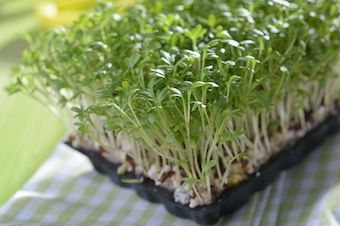

The leaves of this culture have a special pungent peppery taste. Such greens are perfectly combined with lettuce and endevium, complementing the taste of many fruits, including citrus fruits and pears. It is also suitable for preparing salads with vegetables - bell peppers, tomatoes, cucumbers and radishes. The best dressings are considered to be balsamic vinegar or citrus vinaigrette. The product is often added to cereals, potato-based dishes, pasta and salads.
Lollo rosso
A plant with large curly leaves of a light green base color and purple tones at the edges. Lollo Rosso greens go well with all existing types of salads with a well-expressed taste. Composition with an iceberg will be unsuccessful. From dressings, seeds and nuts, sesame oil are used.
Chard
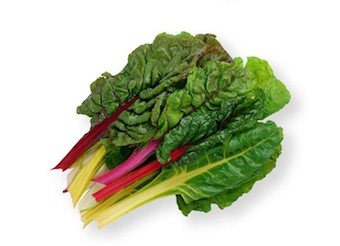

In another way, this type of salad is called beetroot. The culture in question has bright green leaves that are fixed on red or silver petioles. Due to these features, the plant is often used for decorative purposes. In terms of taste, Swiss chard leaves vaguely resemble beets.
Greens are used for wrapping cabbage rolls for making salads and even cabbage soup. Often the leaves are consumed fresh; when the product is fried in olive oil for 4-5 minutes, an excellent side dish for meat and fish is obtained. To improve the taste, its composition is complemented with hot white pepper and salt. Chard deteriorates quickly, so it must be used on the day of purchase.
SALAD-LATUK / Description.
Lettuce (lettuce, lettuce) - Lactuca sativa L. in the description is an annual or biennial plant of the Aster family. The generic name of the plant comes from the Latin word "lacta" - milk; so it was named for the white milky juice contained in all tissues of the lettuce. And the word "salad" means in Italian simply salted, salted - the memory of how this vegetable was eaten.
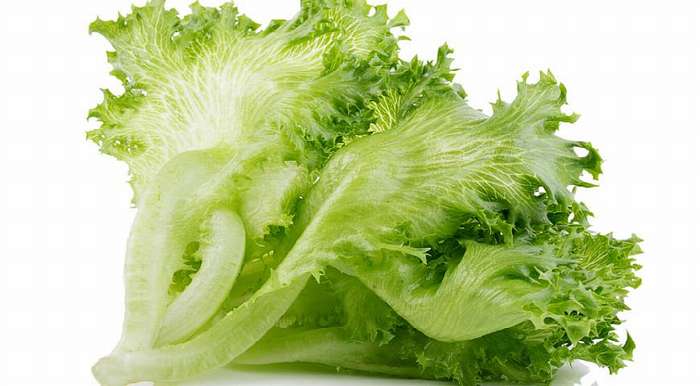

Lettuce is more common in Russian vegetable gardens than other lettuce plants. In Russia, lettuce began to be grown only at the beginning of the 18th century, although the history of its cultivation goes back more than one millennium.
The Mediterranean is considered the homeland of lettuce, and its closest wild relative is the compass salad (Lactuca serriola Torn.), Which still grows in weedy places, fallows, along ravines, in river valleys, in the foothills in Europe, Asia, North America. ...
As a cultivated plant lettuce (lettuce) is mentioned in the description as early as 350 years BC. like a vegetable that was served to the table of the Persian kings. In ancient Greece, lettuce (salad) was used both as a vegetable crop and for medicinal purposes. The Romans served lettuce as a dessert, later as a snack to whet the appetite. Already at the beginning of the new era, a wide variety of forms of this vegetable plant appeared.
In Central Europe, lettuce (lettuce) became known only during the time of Charlemagne (768-814), but in this era of the late Middle Ages, it was cultivated in almost all European countries from the west and on other continents.
In Russia, lettuce (lettuce) came from the West and the first mention of it dates back to the beginning of the 17th century as “the herb consumed by the Germans”. When the industrial cultivation of vegetables began in Russia in the middle of the 19th century, lettuce was always present in the assortment of gardeners near St. Petersburg and around other large cities.
Cultivated varieties brought from Western Europe. Many of them are known today:
- STONE HEAD,
- BETTNER,
- BERLIN YELLOW,
- BATAVIA and others. Lettuce (salad) was a rare guest in peasant gardens.
In the second half of the 20th century, with the construction of large greenhouse complexes in our country and the emergence of a whole army of amateur gardeners, interest in this lettuce as a garden culture increased significantly.
Short salad list
Among the cabbage and leafy types of salads (the main varieties are shown in the photo in the article) there are:
- Compass lettuce.
- Perennial lettuce.
- Poisonous lettuce.
- Iceberg.
- Batavia.
- Watercress
- Chinese cabbage (or pak choy).
- Korn.
- Frize.
- Lollo rossa.
- Oily salad.
- Novita.
- Oaky salad.
- Rapunzel.
- Romaine.
- Arugula.
- Asparagus (or simply asparagus).
- Spinach.
- Field salad.
- Sorrel and so on.
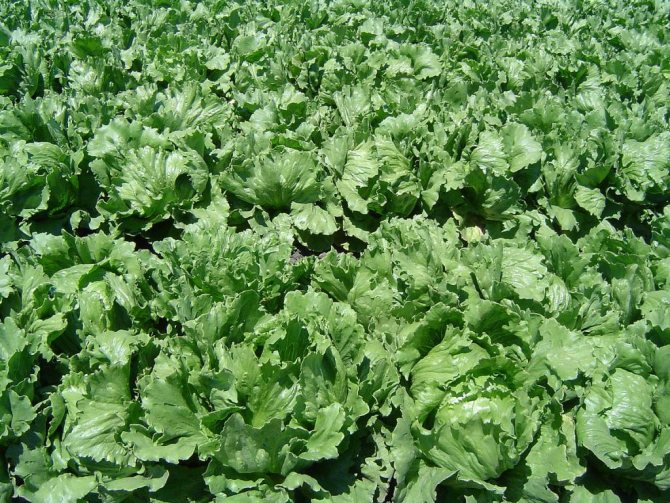

This is just a tiny fraction of that richest variety of species and varieties of such a plant. Now let's move on to considering some varieties in a little more detail. But first, it should be noted once again that they all belong to either the leafy or the headed varieties. The most popular are 3 types of salad: lettuce, arugula and iceberg.
SEEDING SALAD / Description
Sowing lettuce in the description is an annual herb of the Asteraceae family. Sowing lettuce has a taproot with numerous lateral roots and an erect stem that branches strongly in the upper third.
The lower leaves of the sowing lettuce are whole or cut to varying degrees, with a smooth or wavy edge, and before the emergence of the shoot, they form a rosette or roll into a head like a head of cabbage. Their color can be very diverse - yellow, light or dark green, red, variegated. Stem leaves are softer and narrower.
The flowers of the seed lettuce are small, yellow, collected in baskets with a diameter of 1.1 -1.8 cm and form corymbose-paniculate inflorescences. The entire lettuce plant contains a thick milky juice, which is secreted on cuts or breaks.
Sowing lettuce fruit is a narrow achene, about 4 mm long, silvery-gray (almost white), brown or black, with a fly when ripe. The mass of 1000 seeds is 1.0 - 1.5 g. The seeds remain viable for up to 4-5 years.
Lollo-rosso
Behind the unusual name of the type of lettuce hides a salad familiar to everyone who visits grocery stores. A green-burgundy plant with curly leaves around the edges is widely sold and is one of the most popular and most common salad varieties. Otherwise it is also called "coral salad". It also has a nutty flavor, but not so pronounced.
Lollo Rosso is a type of lettuce, and lettuce ranks first among all types of lettuce in terms of the amount of potassium in it. Thus, for hypertensive patients and people suffering from thyroid diseases, as well as those who adhere to a diet, Lollo-Rosso, like any other lettuce, is extremely useful.
SALADS / Growing.
When growing lettuce and sowing lettuce, it is important to know and correctly use the plant's requirements for its growing conditions.
Lettuce belongs to cold-resistant plants. When grown, lettuce seeds begin to germinate at a temperature of 4-5 degrees C. In the phase of a rosette or head of cabbage, salads tolerate short frosts up to - 5-12 degrees C, however, the optimal temperature for its growth is 15-20 degrees C. An elevated temperature of 20-25 degrees C is needed for lettuce, sowing lettuce during flowering and seed ripening.
Exposure to low temperatures of 0-4 degrees C on germinating seeds or shoots of lettuce, lettuce can cause an undesirable rapid emergence of a generative shoot before the plant forms a sufficient vegetative mass.
Lettuce and sowing lettuce are light-loving plants. If there is a lack of light during cultivation (in the shade, with thickening of the sowing), the leaves become smaller, stretch out, the head of cabbage does not form in the head forms.
According to the requirement for the length of the day, salads (lettuce, sowing) are classified as long-day plants, which accelerate the transition to flowering under conditions of a long day and slow down on a short (10-12 hour) day. But among the varieties there are also neutral in relation to this factor.
A good harvest of greens lettuce and sowing lettuce give on structural soils, rich in humus and containing mineral nutrients in an easily digestible form. The best for growing salads are light sandy loam or loamy soils with a neutral reaction. Lettuce (lettuce, sowing) grows well after crops, under which manure was introduced in the previous year.
A high concentration of mineral salts is unfavorable for lettuce, seed lettuce, and this must be taken into account when feeding the plant with mineral fertilizers.
During vegetative growth, the soil for salads (lettuce, sowing) should be moderately moist throughout the entire period. The combination of lack of moisture and high air temperature is especially unfavorable for salads. In this case, the leaves are small, coarse with strong bitterness.
The combination of lettuce, lettuce sowing early maturity and cold resistance, the presence of varieties of different early maturity, the use of several sowing periods of salads allow you to get lettuce greens almost throughout the year, and with the use of insulated protected ground and additional lighting - all year round.
Unfortunately, in Russia, lettuce, sowing lettuce, as a vegetable plant that is extremely valuable in its nutritional qualities, is grown and consumed in very limited quantities.
SALADS and predecessors
The best predecessors for growing lettuce are cucumbers, early potatoes, tomatoes, early white cabbage and cauliflower, carrots and beets for bunch products, celery, parsley for herbs, radishes.
In the open field, lettuce (lettuce, sowing) is grown both by sowing seeds in the ground, and by seedling. The first sowing date is early spring when the soil is ready for cultivation.
GROWING SALAD / Seed method
Sow lettuce seeds in rows with row spacing of 25-30 cm. Lettuce seeds are sealed to a depth of 1.0-1.5 cm.When the first true leaf appears, the plants are thinned out, leaving a distance of 4-5 cm between them, and in the phase of 4-6 true leaves they are thinned again, by 12-15 cm for early ripening varieties, 20-25 cm for mid-ripening and 25-30 for late-ripening ones. Lettuce plants (lettuce, sowing), removed during the second thinning, are already suitable for use in food.
CULTIVATION OF SALAD / Method of growing lettuce through seedlings.
The seedling method of growing allows you to get lettuce (lettuce, sowing) from open ground at an earlier date and more economically spend seeds.
For early cultivation, lettuce seedlings are prepared in greenhouses, greenhouses or at home. Seeds are sown 30-35 days before the planned planting of seedlings in the ground. Sowing is done in boxes with row spacing of 3-5 cm, seeds are planted to a depth of 0.5-1.0 cm.In the phase of 1-2 true leaves, the seedlings dive into peat pots 5 X 5 cm in size.When diving, the lettuce plant should not be buried below the root neck.
Seedling care when growing - moderate watering, loosening the soil, airing. By the time of planting in the ground, lettuce seedlings should have 5-6 true leaves and a well-branched root system.
The nutritional area of one lettuce plant (lettuce, sowing) when planted is at least 15 X 15 cm for early ripening varieties and 25 X 25 cm for late and mid-ripening varieties.
When grown, potted lettuce seedlings provide 100% plant survival, early and high yield of greens.
For subsequent growing periods, potless seedlings can also be used, sowing in film greenhouses along the edge of a ridge with other crops or directly in the open ground at the rate of 0.5 g per 1 square meter, covering the sowing with lutrasil or other protective materials.
In the phase of 3-4 true leaves, lettuce plants, lettuce plants can be planted in free places, giving them the necessary nutritional area. In order to have grown fresh lettuce for a long period, sowing must be repeated after 3-4 weeks.
Caring for the sowing and planting of lettuce is simple - moderate watering, loosening, weeding.
Lettuce (lettuce, sowing) is finally harvested when the plants, when grown, reach a typical rosette or head of cabbage (for head salads), but not later than the start of the shoot. The exception is the varieties of asparagus salad, which uses the stem for food.
In a protected group, where the seedling method of growing allows at the first stages of lettuce growth to occupy a small area, this method is the main one. The area of nutrition for a plant when planting seedlings is here the same as in open ground. When caring for lettuce in greenhouses during cultivation, in addition to watering and loosening, it is very important to observe the ventilation mode.
GROWING SALAD / Getting seeds.
The Central Black Earth Region and the southern zone of Russia are most favorable for obtaining lettuce seeds. Lettuce (lettuce, sowing) is a self-pollinated plant, but along with self-pollination, cross-pollination is also observed. When grown in the southern zone, cross-pollination can be up to 20% in some years.
When seed-growing several varieties of lettuce, spatial isolation (200m) or alternation of plantings of lettuce with tall crops is required.
The nutritional area for growing lettuce seed plants increases. With a row spacing of 70 cm, the distance between plants in a row is 50-70 cm.
When growing lettuce, it is necessary to clean up lettuce plants: remove diseased plants and plants that have not formed the rosettes and heads of cabbage typical of the variety, and have prematurely formed flowering shoots. Collecting seeds from such plants leads to the degeneration of the variety.
In varieties of lettuce, which form very dense heads of cabbage, they practice during cultivation such a method as a cruciform incision at the top. This makes it easier for the stem to appear.
When growing, they also practice cleaning the seed shoot in its lower part from the remnants of the leaves of the rosette and the head of cabbage. This method prevents the development of rot on the seed course.
A small amount of lettuce seeds in the Non-Black Earth Zone can be obtained under the conditions of film greenhouses.
When grown, lettuce seeds ripen unevenly and tend to shedding. To avoid losses, seed plants are harvested when flyers appear on the lower branches of the shoot. The best time for harvesting is early morning, when the lettuce plants are wet with dew and the seeds are not scattered. Plants are dried under a canopy, threshed and the seeds are removed from the chaff.
Care: the basics of a good harvest
Lettuce is a crop that does not require special measures of cultivation and care. To get a high yield, you need to loosen the soil in a timely manner, get rid of weeds and water the salad. Watering is done infrequently, but abundantly. In dry weather, water should be watered once a day, in cool weather - 2-3 times a week. Top dressing is not a necessary measure, since lettuce is an early ripening crop.
Did you know? European production of lettuce is about 3 million tons. The largest producers are Italy, the Netherlands, Belgium, France, Spain. The main exporter is Spain.
SALADS / Useful properties and application.
The beneficial properties of salads are determined mainly by the richness of the vitamins they contain.
Lettuce, sowing lettuce is a rich source of various vitamins. And no one will dispute the beneficial properties of ascorbic acid: the leaves contain ascorbic acid up to 80 mg per 100 g of dry matter.
There are a lot of B vitamins in salads: B1, B2, B6, useful fat-soluble vitamins E, K and carotene (provitamin A).
Lettuce leaves, sowing - a source of carbohydrates, protein, organic acids. Very rich in lettuce, seed salad in mineral salts, especially salts of potassium, calcium, phosphorus, magnesium.
Benefits for the body
Thanks to its rich set of chemical elements, lettuce eliminates inflammation. The diet of therapeutic food includes green leaves to normalize the digestive system, in order to lower cholesterol levels. In the fight against atherosclerosis, obesity, insomnia, hypertension, the leaves are also useful.
The benefits can be traced with the regular use of this greenery. It simultaneously increases appetite and promotes weight loss (due to its low calorie count).
Folic acid is useful for regulating metabolic functions. In addition, the immune system is strengthened and blood circulation is improved. Vitamin B9 is useful for establishing and restoring metabolic processes in both the male body and the female. But the special benefits of folic acid are manifested for a woman planning a pregnancy and in the first trimester.
In cosmetology, an extensive set of vitamins and microelements is also useful, since nails are strengthened, the healthy structure of the skin is restored (both oily and dry).
Batavia
It is Batavia that can be found on store shelves in the spring earlier than others. It is easy to recognize this type of salad by its noticeable leaves. They are very large and wavy at the ends of the Batavia. Unlike many other types, Batavia is a rather juicy, sweet and tender salad, but it is practically unusable for storage. It spoils in just a couple of days.
Batavia can be considered a versatile ingredient. It can be used in salads, sandwiches, vegetables, and even meat. Also, this salad variety, many chefs prefer to decorate dishes before serving.
Korn
Among the types of lettuce, one stands out. It is called field salad, or Corn. What is so special about this variety? This is his appearance. The thing is that the leaves of field lettuce are dark green in color, curl in a characteristic way, which makes them look like roses. Corn goes especially well with bacon, citrus fruits and nuts.It is also an excellent sedative. And if you eat just one hundred grams of this type of salad, then the entire daily intake of vitamin B9 will be replenished.
Spinach
Who has not heard of the existence of spinach ?! Meanwhile, surely not everyone knows that this is also a type of salad. It has a slightly sweet taste, more pleasant, perhaps, than its other "congeners". Spinach has a huge positive effect on the digestive system - in France it was even given the nickname "broom for the stomach", so thoroughly and without a trace it "sweeps" all unnecessary from the body. The French generally favor spinach more than other types of salad vegetables. As for Russia and the CIS countries, it cannot be said that spinach is the most popular among all varieties of culture, but it is certainly included in the “ten most-most”.
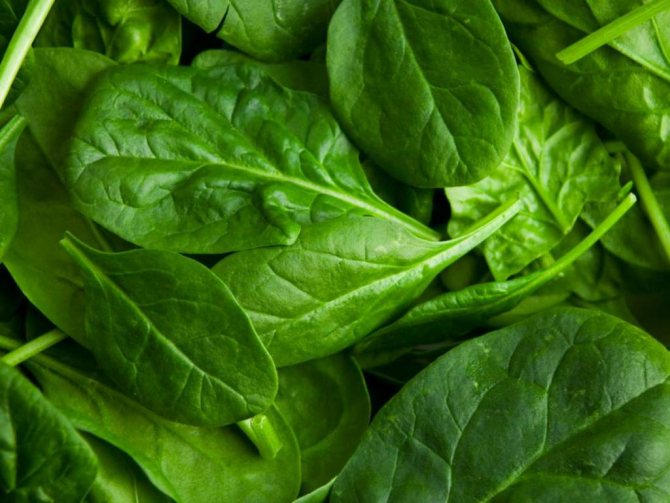

Spinach is characterized by the fact that, unlike many other species, it can be given to very young children and pregnant women, since it does not have a destructive effect on the body even when consumed in large quantities. It is very often recommended by nutritionists, not only for those who seek to lose weight, but also for those who suffer from anemia, gastritis, diseases of the nervous system and / or diabetes mellitus.
Spinach is good not only as a "companion" of all kinds of dishes (including baked goods), not only as a separate food, but also as a puree soup. Such light spinach soups turn out to be very tasty, satisfying, and most importantly, they retain all the beneficial properties of the plant.
Iceberg
Unlike many, Iceberg is not a leafy salad. He, of course, has leaves, but still it is a head variety. And it also slightly resembles a white cabbage in its appearance.
It is a very crispy, juicy and slightly bitter salad. It is not afraid of the cold, and therefore it can be stored for a long time (the main thing is not to forget about it). Iceberg is rich in fiber, it is good to eat it in case of metabolic disorders. This type of salad is also recommended for those who want to lose weight.
Radicchio
So what other types of salads are there? Radiccio is definitely an Italian salad. Like Frize, it is a variety of chicory (only grown on another land). Radicchio is interesting for his appearance. The fact is that it is not green, but purple (some call this shade red, but if you look closely, it will still be more accurate to call it purple). It has a bitter and spicy aftertaste, we can say that this type of salad is not for everybody's taste. By the way, there are two types of Radicchio: summer and winter. The first is harvested in the fall, the second in the spring, and it (that is, the winter variety) is softer in structure.
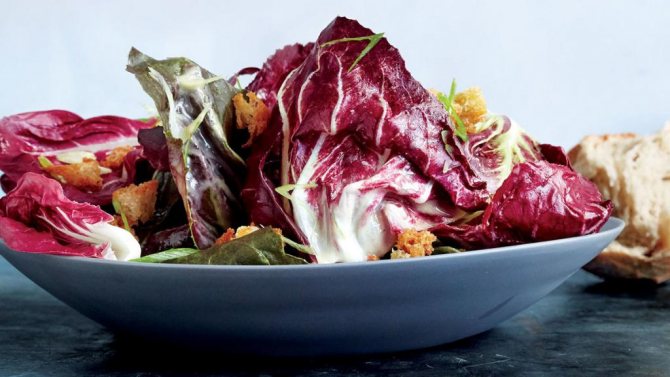

Radicchio is very popular in Italian cuisine and is used in a wide variety of dishes. This variety is rarely found on domestic counters. Due to the fact that it is less well-known, there is little demand for it.

